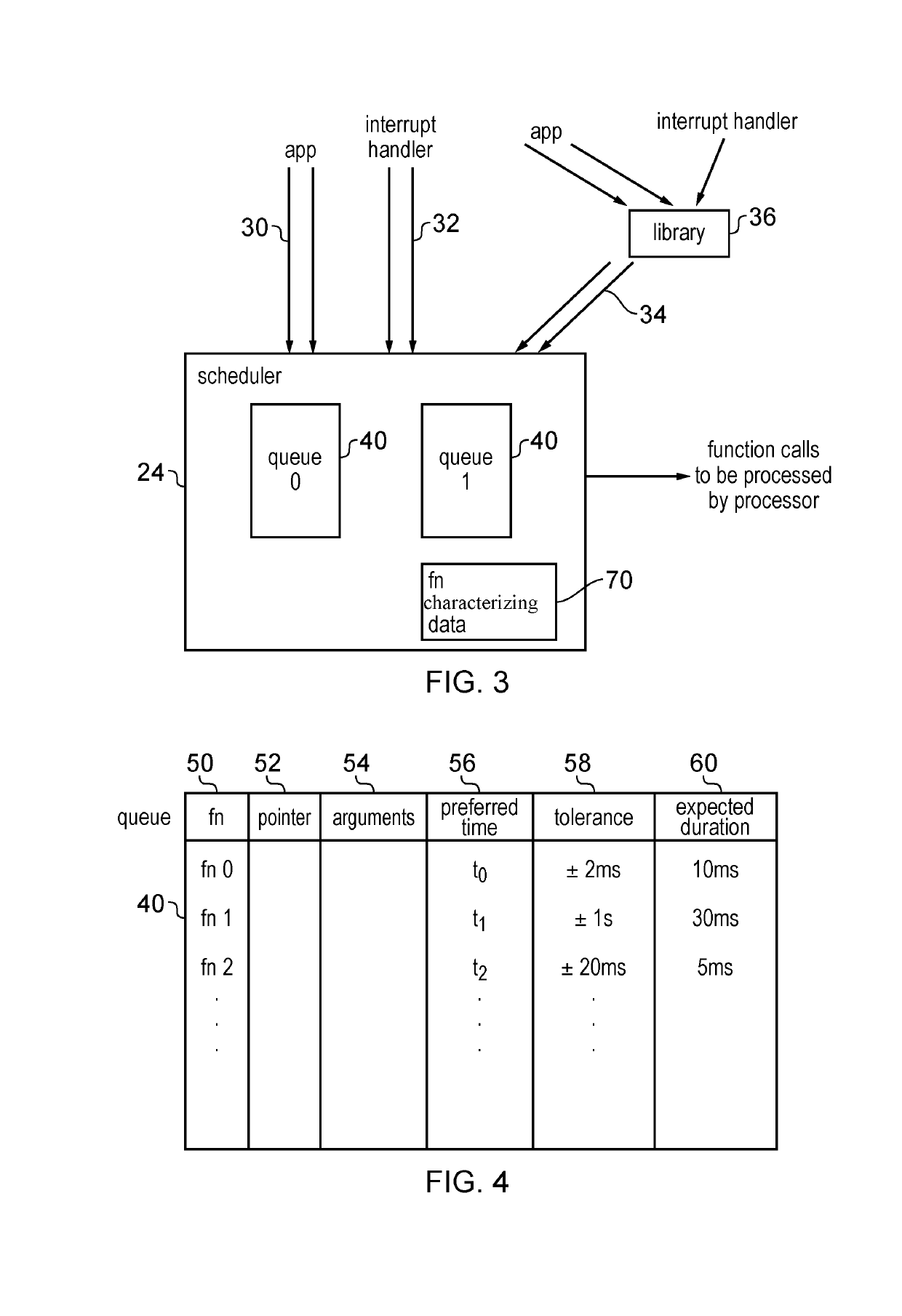Scheduling function calls
a function call and function technology, applied in the field of data processing, can solve the problems of not being able to handle all of the function calls right away, not being able to solve the problem of processing processing time being busy, and having very little spare capacity, so as to improve energy efficiency, improve lateness, and high processing efficiency
- Summary
- Abstract
- Description
- Claims
- Application Information
AI Technical Summary
Benefits of technology
Problems solved by technology
Method used
Image
Examples
Embodiment Construction
[0052]FIG. 1 schematically illustrates a data processing apparatus 2 comprising processing circuitry 4 for processing data. The processing circuitry 4 may comprise one processor core or multiple processor cores. The apparatus 2 has a memory 6 for storing data and instructions to be processed by the processor 4. A user input interface 8 is provided, for example including input buttons, a touch screen, or other input devices. An interrupt controller 10 is provided to receive interrupts and trigger corresponding interrupt handling to be processed by the processor 4. For example, when the user presses a button on the data processing apparatus 2, then an interrupt is triggered and the interrupt controller 10 triggers the processing circuitry 4 to perform a corresponding interrupt handling routine for carrying out some processing operations associated with the pressed button. The processing apparatus 2 also has an optional wireless communication unit 12 for communicating with other device...
PUM
 Login to View More
Login to View More Abstract
Description
Claims
Application Information
 Login to View More
Login to View More - R&D
- Intellectual Property
- Life Sciences
- Materials
- Tech Scout
- Unparalleled Data Quality
- Higher Quality Content
- 60% Fewer Hallucinations
Browse by: Latest US Patents, China's latest patents, Technical Efficacy Thesaurus, Application Domain, Technology Topic, Popular Technical Reports.
© 2025 PatSnap. All rights reserved.Legal|Privacy policy|Modern Slavery Act Transparency Statement|Sitemap|About US| Contact US: help@patsnap.com



